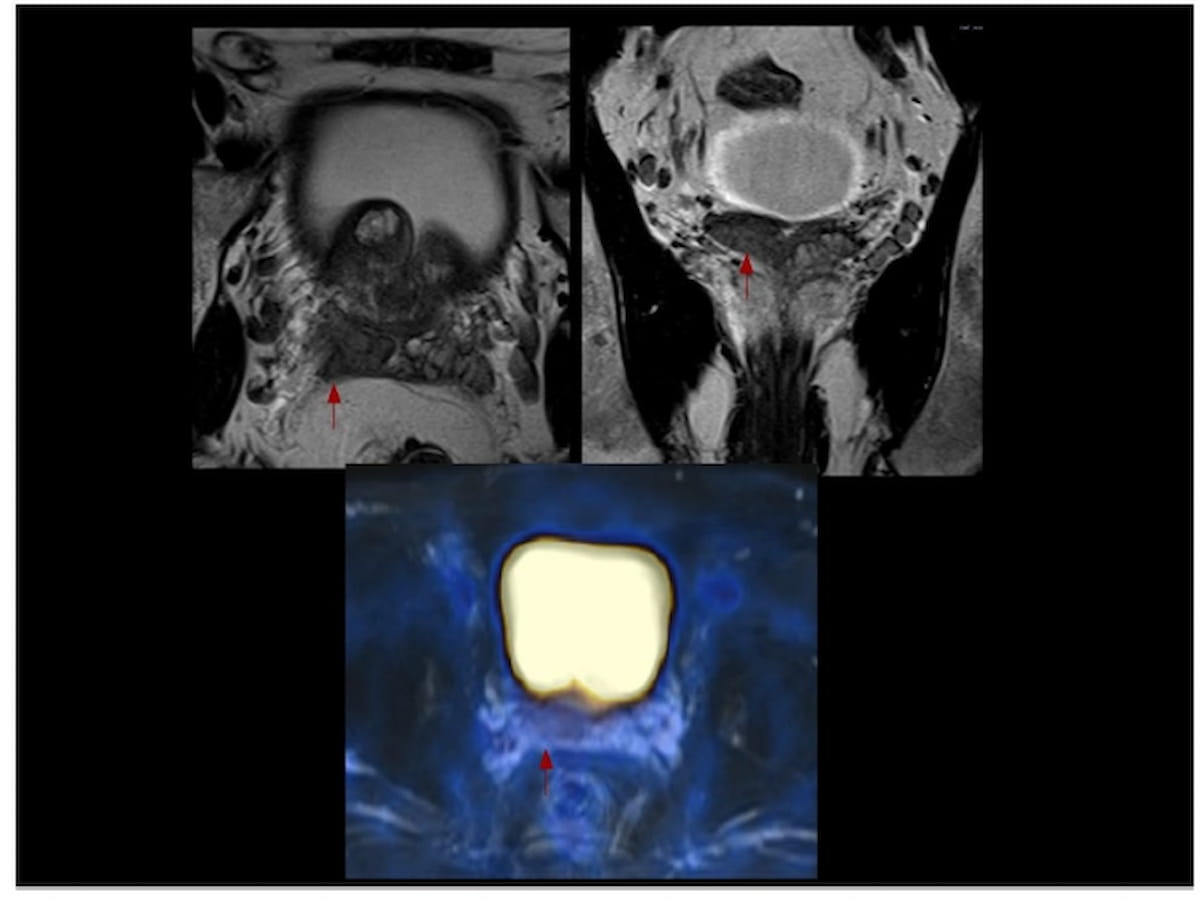Emerging research suggests the combination of positron emission tomography (PET) and magnetic resonance imaging (MRI) offers superior detection of localized prostate cancer in comparison to multiparametric MRI (mpMRI).
For the prospective observational study, recently published in the World Journal of Urology, researchers compared the preoperative use of Ga-PSMA PET MRI and mpMRI in 75 men (mean age of 65) with prostate cancer (PCa) who underwent radical prostatectomy at a tertiary care facility. The cohort had an average prostate-specific antigen (PSA) level of 21.5 ng/ml, according to the study.
While the specificity rates of PET MRI and mpMRI for localized PCa were similar (81.5 percent vs. 83.2 percent), the researchers found that PET MRI had a 63.6 percent sensitivity rate in contrast to 41.9 percent for mpMRI. The study authors also noted that PET MRI provided higher positive predictive value (PPV) (76.3 percent vs. 70 percent) and negative predictive value (NPV) (70.4 percent vs. 60.4 percent).
“This added advantage of PSMA PET MRI in the localization can help in guiding prostate biopsies and predict areas of significant prostate cancer,” wrote study co-author Vishnu Prasad, M.D., a consultant urologist affiliated with Amrita Institute of Medical Sciences in Kerala, India, and colleagues.
The study authors noted that PET MRI and mpMRI provided similar specificity rates for seminal vesicle invasion (SVI). However, the researchers pointed out that PET MRI had a greater than 28 percent higher sensitivity rate for SVI (85.7 percent vs. 57.1 percent). For lymph node involvement (LNI). LNI, PET MRI also had a 17.8 percent higher PPV than mpMRI, according to the study authors.
“PSMA PET MRI had a statistically significant higher sensitivity to detect SVI whereas there was no significant difference with regard to (extraprostatic extension) EPE and LNI,” noted Prasad and colleagues. “Both PPV and NPV were higher for PSMA PET MRI compared to mpMRI for all three parameters of local staging except for EPE where NPV was slightly lower (32.6 (percent) vs. 34.1 (percent)) for PSMA PET scan.”
Three Key Takeaways
- Superior detection rates with PSMA PET MRI. The combination of positron emission tomography (PET) and magnetic resonance imaging (MRI) shows superior detection of localized prostate cancer compared to multiparametric MRI (mpMRI). Specifically, PSMA PET MRI demonstrated higher sensitivity, positive predictive value (PPV), and negative predictive value (NPV) compared to mpMRI.
- Enhanced localization and staging. PSMA PET MRI offers improved localization and staging capabilities for prostate cancer. It provides higher sensitivity for detecting seminal vesicle invasion (SVI) and a higher positive predictive value (PPV) for lymph node involvement (LNI) compared to mpMRI, indicating its potential utility in guiding prostate biopsies and predicting areas of significant cancer.
- Potential for earlier clinical Implementation. Despite current guidelines not recommending PSMA PET use prior to biopsy, the study suggests potential advantages in using PSMA PET MRI earlier in the diagnostic process. Conducting PSMA PET MRI before biopsy may reduce overall costs, patient inconvenience, and unnecessary biopsies, although further validation is needed, particularly regarding cost-effectiveness in biopsy-negative patients.
While conceding that current guidelines do not recommend PSMA PET use prior to biopsy, the researchers suggested that earlier use of the modality may be advantageous.
“A PSMA PET MRI done in the initial setting before the biopsy can reduce the overall cost and cause less inconvenience to the patient (including traveling cost). But this needs further validation to also consider the cost factor in biopsy-negative patients,” added Prasad and colleagues.
(Editor’s note: For related content, see “Study: PET/MRI May Prevent Up to 83 Percent of Unnecessary Biopsies in Men with PI-RADS 3 Lesions,” “ECR Study Examines Key Predictive Factors for Metastasis in Patients with High-Risk Prostate Cancer” and “Guideline-Driven Insights: Exploring SNMMI PSMA-PET Imaging Recommendations in Prostate Cancer.”)
In regard to study limitations, the researchers acknowledged the prospective observational nature of the study, and the possibility of patient selection bias with the entire cohort being comprised of patients with biopsy-proven PCa. The study authors also conceded that extrapolation of the results to a broader population may be limited with the majority of the cohort patients having intermediate or high-risk PCa.
(Editor’s note: For additional content on prostate cancer imaging, click here.)

